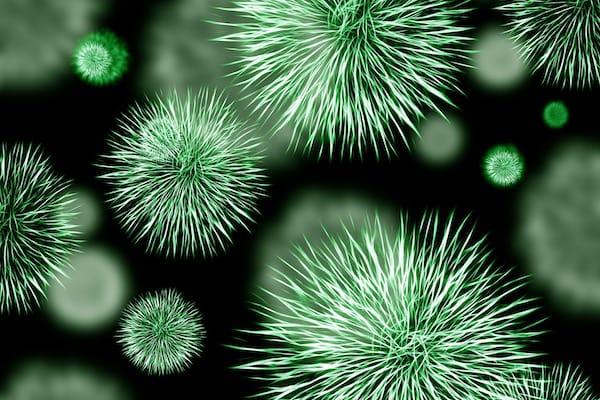From Mystical Medicine to Rational German Science
Franciscus Sylvius (1614-1672) was a German physician, although he spent most of his life and career in Netherlands, credited with furthering and adding to the teachings of Paracelsus, i.e., Philippus Aureolus Theophrastus Bombastus Von Hohenheim, a Swiss-German physician and anatomist (1493-1541), who established the critical link of chemistry to medicine (iatrochemichemistry). He contributed greatly to German science.
Following Paracelsus’ Footsteps
Before one can understand and appreciate the contributions Sylvius made to medicine, chemistry, and to science overall, one must first acquaint oneself with the groundwork laid by Paracelsus, who disdained most university and classical medical teachings as essentially useless—despite his degree from the University of Vienna. Typical of Paracelsus was his wry comment wondering how “the high colleges managed to produce so many high asses.” “Knowledge is experience” pronounced Paracelsus, who traveled extensively to pick the brains of those who had practical, everyday experience with illnesses, diseases, and injuries, e.g., innkeepers, gypsies, barbers, midwives, old robbers, draymen, etc. Paracelsus was one of the first to reject astrology, i.e., the notion that the stars and planets control all the physical, emotional, spiritual, and psychological aspects of man. Paracelsus was not a modest man; indeed, his so-called byname, “Paracelsus,” refers presumptuously to the celebrated 1st-century Roman medical writer Aulus Cornelius Celsus: Paracelsus deemed himself better than Celsus and reïnvented himself as being para, i.e., above or beyond, Celsus—Paracelsus.

His Achievements
Modesty aside, Paracelsus’s main contributions upon which Sylvius built his medical edifice include Paracelsus’s clinical description of syphilis and its successful treatment with mercury compounds; his assertion that breathing metal vapors caused silicosis in miners, not by the curses of mountain gods; his advocacy of treatments such as dosing and curing plague victims with minuscule bits of a victim’s excrement presaged modern homeopathy; and his linking goiter with both lead and drinking water (iodine would not be discovered until 1811). Paracelsus created chemical compounds, i.e., medicines, that variously combined such elements as mercury, sulfur, iron, and copper and, in doing so, set the stage for the beneficial relationship between medicine and chemistry.
Sylvius’ Biography
Sylvius was born into a wealthy family in Hanau, Germany. He studied at the Academy of Sedan, founded by John Calvin in Sedan, France, a Protestant enclave on a small peninsula on the Meuse river in northern France, about 10 kilometers from Belgium. The University of Basal subsequently awarded Sylvius his medical doctorate in March, 1637, after he successfully defended his thesis “De animali motu ejusque laesionibus” (“Animal Movement and Its Disorders”)—the first preliminary description of the now quite famous lateral cerebral fissure, which Sylvius fully described 26 years later.
Sylvius was an accomplished teacher of anatomy and numerous students and accomplished anatomists attended his classes at the University of Leiden, where he added to his initial discovery of the lateral cerebral fissure by strongly promoting William Harvey’s work explaining the pulmonary circulation of blood, all the while not straying too far from Galen’s observations 14 centuries earlier regarding the influence of blood.
Sylvius emphasized the necessity of critical diagnoses, prognoses, and therapies to deal with illnesses and was one of the first to use animal postmortems to identify and evaluate failed diagnoses and therapies with an eye toward changing and improving them, if possible.
While steeped in this practical research, Sylvius also pursued the investigation and establishment of iatrochemistry, i.e. the concept that explains a healthy body’s normal processes as dependent on chemical interactions; an idea that augured the concept of modern neurotransmitters by three centuries. One of Sylvius’s focuses was the human body’s acid-alkaline stress which he called “effervescence” and “violent reäction” which were initially described in a paper as exemplified by “. . . the primary natural functions of the human body deduced from anatomical, practical, and chemical experiments,” yet Sylvius persistently clung to the notion of “animal spirits,” essentially uncivilized emotions, carried by blood to the brain.
Humble Beginnings
Sylvius was quite mistaken in his belief that flawed interactions in and of themselves between acid-alkaline bodily components brought about disease, but Sylvius’s hypotheses were first steps toward more enlightened research and progress. If Sylvius hadn’t taken his initial steps, then medicine, chemistry, and science overall would not have progressed so quickly nor so rationally. For example, Sylvius’s abiding interest in the brain’s vascular system and his pursuit of the influence of the so-called animal spirits affecting man prompted his study of the brain’s structure, particularly its surface. The Danish anatomist Thomas Bartholinus said quite early on (1640) that “we can not pass over in silence the very accurate anatomist D. Franciscus Sylvius, since we borrow from his noble brain and ingenuity the admirable new structure of the brain.”
Sylvius’s experience in research and his continued devotion to the spirit of Paracelsus played a great role in his being credited for the establishment of clinical ward training of would-be physicians (remember Paracelsus’s “knowledge is experience”?) and the introduction of the first university chemistry laboratory (iatrochemichemistry)—both of these rational additions to medical education continue at medical schools worldwide almost five centuries later.
